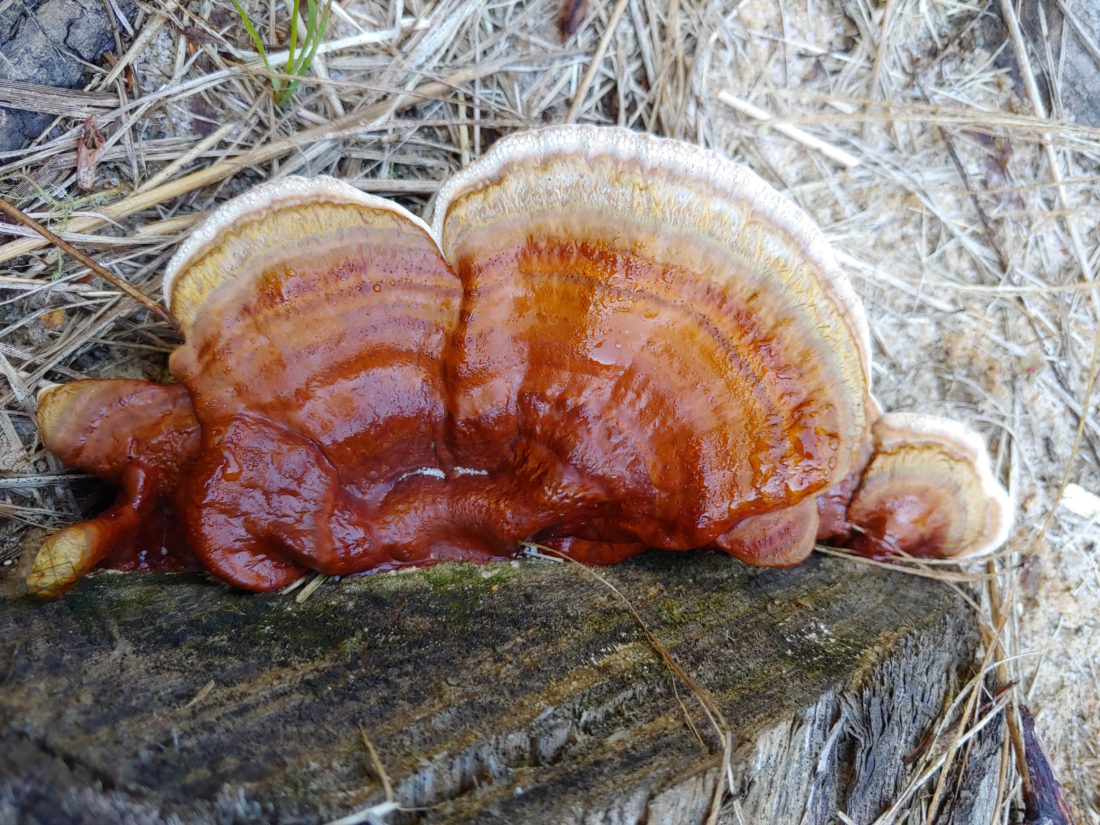Medicinal mushrooms are a hot trend in alternative health circles these days. Curious-looking fungi such as reishi, chaga and lion’s mane are broadly available in extracted form as health supplements. At the same time, nutritionists, chefs and adventuresome home cooks are pushing culinary boundaries to devise new and tasty ways to enjoy these friendly fungi.
Stepfanie Romine, author of the newly published Cooking with Healing Mushrooms: 150 Delicious Adaptogen-Rich Recipes that Boost Immunity, Reduce Inflammation and Promote Whole Body Health, acknowledges that not all people love mushrooms. “Mushrooms tend to be a polarizing food just because of their texture. They were for me at first,” she says.
But there are ways that even mushroom haters can work healing fungi into food, she adds. “A little bit goes a long way. Even if you think you don’t like mushrooms, finely chop them up and add them to a dish,” she explains. “You are going to add a ton of flavor and you are going to get the medicinal benefits.”
Pairing is also helpful, she says. For example, reishi extract is bitter, yet pairs well with semisweet chocolate, creating a “deep, nuanced bittersweet chocolate flavor.” (Try this with Romine’s savasana truffle recipe noted in the sidebar.)
Cooking with Healing Mushrooms contains 150 original recipes showcasing 15 types of medicinal fungi ranging from soft cooking varieties such as shiitake and cremini to tough tree species, including reishi and chaga. The recipes run the gamut from savory main dishes such as miso mushroom stew to sweets like no-bake pumpkin chaga cheesecake, plus smoothies, broths, soups, stews and snacks.
Romine is particularly drawn to medicinal mushrooms because they bridge the gap between medicine and food, offering both immune system and stress support. Romine, who personally follows a plant-based diet, says mushrooms offer both protein and a hearty texture, making them a strong option for those looking for satisfying, meatless meals.
She notes that good sourcing is imperative in cooking with mushrooms, as some are inherently dangerous, and all have an incredible capacity to absorb toxic materials from the earth, which can then be transmitted to consumers.
Eric Christianson developed his business, Pisgah Gourmet, to offer sustainably grown culinary and medicinal mushrooms with a focus on gastronomy and mycological education. Christianson, a Brevard native, came to mushroom cultivation after a career in computer science.
Transitioning to mushroom growing from tech may sound like a leap, but Christianson explains that there are some surprising connections. For example, he points out that mushrooms create a mycelium network as they grow, which serves as a vast communication highway. “They are kind of like the Earth’s internet,” he says. “There is not a lot that we know about the whole process.”
Pisgah Gourmet is currently in transition as the business moves to a new property, but in the past, Christianson was a regular vendor at local farmers markets. He says shoppers were often baffled about how to cook with and eat medicinal mushrooms. To begin with, he provides a simple rule of thumb for cooking all types of mushrooms: Don’t start with a heated pan, which can produce an undesirable slimy texture.
Instead, he suggests placing fresh mushrooms in a cold pan and slowly heating it until steam begins to rise. After the mushrooms start to stick to the pan a little, then add oil and proceed.
He also offers a few other tips. “Onion and garlic are mushrooms’ friends. Just onions, mushrooms, garlic and your favorite cooking oil … can make a great side dish,” he says, adding that garden-fresh greens and common herbs such as thyme also nicely complement mushrooms, as do risottos and cream soups. He suggests Cooking with Healing Mushrooms as a good resource for these types of recipes.
Medicinal mushrooms can also be prepared as a simple breakfast. “Mushrooms and eggs are my regular go-to,” says Christianson. “I’ll cook up some lion’s mane and then crack some eggs over it.”
Lion’s mane, he adds, is more than just tasty. “It is the only thing in the natural world that we know of that contains nerve growth factor,” he says. Nerve growth factor is a proteinlike molecule that plays a role in the development and maintenance of neurons, and Christianson reports that he notices a marked difference in his mental alertness and energy on the days that he eats lion’s mane.
Beyond proper identification and sourcing, both Romine and Christianson advise against consuming mushrooms raw, as uncooked fungi may be harmful. Also, cooking mushrooms makes their beneficial constituents more bio-available. And, of course, when harvesting wild mushrooms, always go with an expert.
To find out more about Stepfanie Romine’s work and where to find Cooking with Healing Mushrooms, visit theflexiblekitchen.com. For more information on Pisgah Gourmet, visit pisgahgourmet.com.




Before you comment
The comments section is here to provide a platform for civil dialogue on the issues we face together as a local community. Xpress is committed to offering this platform for all voices, but when the tone of the discussion gets nasty or strays off topic, we believe many people choose not to participate. Xpress editors are determined to moderate comments to ensure a constructive interchange is maintained. All comments judged not to be in keeping with the spirit of civil discourse will be removed and repeat violators will be banned. See here for our terms of service. Thank you for being part of this effort to promote respectful discussion.